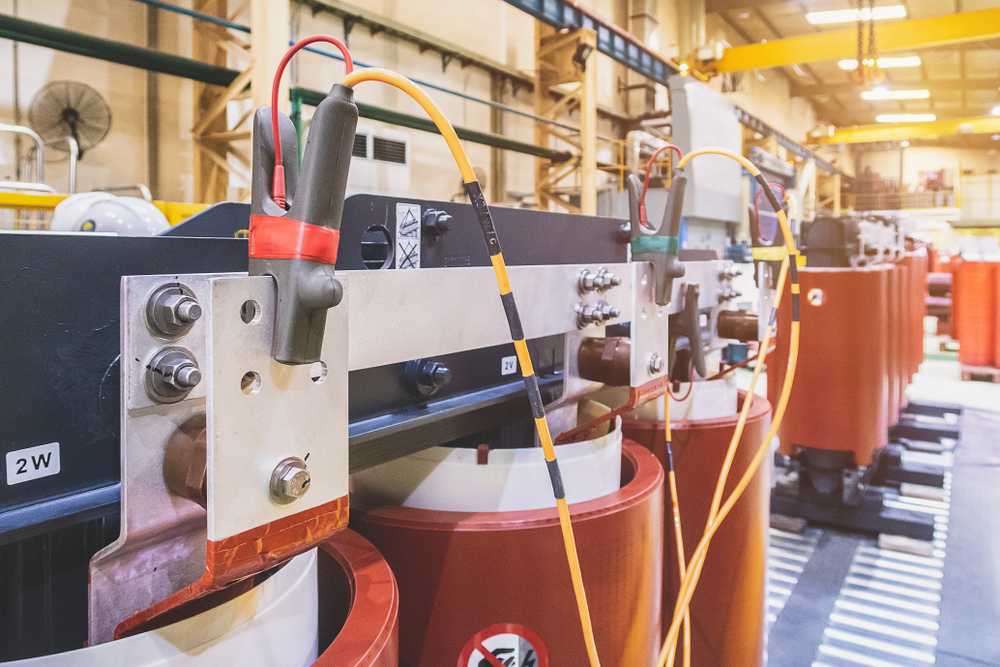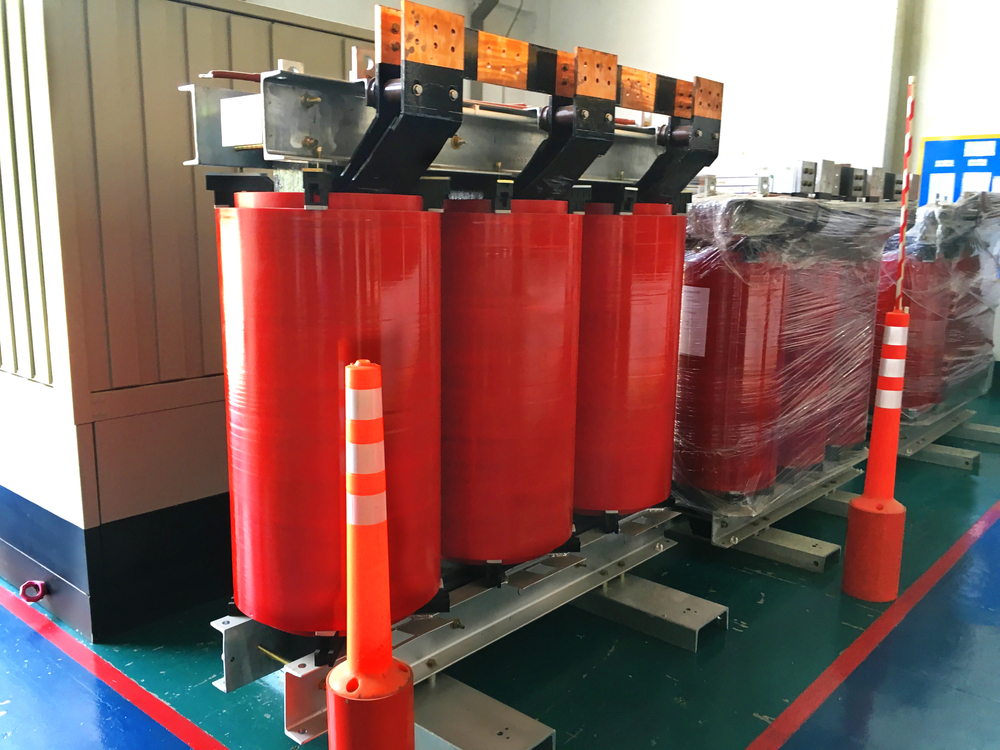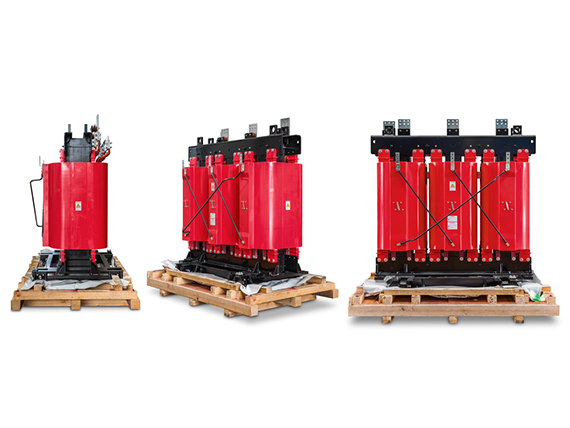What is a Dry Type Transformer: Types and Its Factors
Dry-type transformers, also known as cast resin transformers, are power transformers with epoxy resin coils. This makes the installation more straightforward as they are dry and require no cooling oil. Additionally, they do not need to be stored in a fireproof vault. The epoxy coating protects against dust and corrosion. Dry-type transformers are used in a variety of applications and can be installed indoors or outdoors.
Table of Contents
1. What is a Dry-type transformer
2. Types of dry-type transformers
3. Important Factors to Design a Dry-type Transformer
4. Advantages of dry-type transformers
5. Disadvantages of dry-type transformers
6. Application of dry-type transformers
1. What is a dry-type transformer?
Dry-type transformers, without moving parts, are stationary equipment using an environmentally friendly insulation system. Traditional liquid-type transformers rely on environmentally taxable materials such as flame retardant oil or liquid dielectric. "Dry" refers to the fact that the system is cooled through natural ventilation rather than using oil, silicone, or liquid to cool the coil and the electrical core. This type of transformer is defined as a "voltage change", which means the air is cooled instead of liquid-cooled. The case of the transformer is placed inside is ventilated so that the air can cool the coil.
Unlike liquid transformers, dry-type transformers do not need to be placed inside fireproof vaults or storage tank, and you don't have to worry about releasing toxic gas out. Since dry-type transformers are much safer, they can be placed indoors and closer to load, making the whole system more efficient.

Dry-type transformer
2. Types of dry-type transformer
There are the following different types of dry transformers available on the market.
- Open Wound Transformer
- VPI-Vacuum Pressure Impregnated
- VPE-Vacuum Pressure Encapsulated
- Cast Coil
a. Open Wound Transformer
This type of transformer is named through its manufacturing process, including the "dip and bake" method. The coils are heated, immersed in varnish at a high temperature, and then heated, known as the open-wound method.
b. VPI (Vacuum Pressure Impregnated) Transformer
VPI transformers are commonly used for commercial and industrial use. They have high-temperature insulation that ranks above the 'O' and 'K' liquid classifications. VPI transformers are made from materials that withstand high temperatures and moisture-resistant polyester glue commonly applied by the vacuum pressure impregnation technique. For the most part, they are rated up to 30 MVA.
c. Vacuum Pressure Encapsulated (VPE) Transformer
VPE transformers are comparable to the VPI described above. However, instead of polyester, they are made from silicon-based plastic, which creates a thicker coating that is highly resistant to moisture, salt, and moisture, making it an excellent choice for harsher environments. They are used in environments susceptible to acids, chlorides, and alkalis.
d. Cast Coil Transformer
These transformers work stably even in extreme weather conditions, so they require very little maintenance, and they are highly resistant to short circuits. Because of these reasons, they were used in an earlier time where liquid-filled units were available for harsh atmospheres. They are currently heavily used in ships, tunnels, nuclear plants, cranes, and the mining industries.
3. Important Factors to Design a Dry Type Transformer
Below are the important design parameters for dry-type transformers.
- Choice of Insulation Type
In general, insulation classes F and H of insulation are used to insulate primary and secondary windings. That's because these grades have high-temperature resistance, i.e., 155 ° C for class F and 180 ° C for H insulation. In general, varnish and polyester resin are used as insulation for the coil. In addition to temperature resistance, mechanical strength; Dielectric strength, and resistance to thermal shock are the necessary capabilities of the insulation chosen for windings.
- Selection of winding material
Generally, copper and aluminum are used to make winding or coils. Although copper is the better conductor of electricity, aluminum coil transformers are low cost and weight. For the same current rating, copper conductors of the smaller cross-section are used as winding material in the transformer. Copper coils provide higher mechanical strength than aluminum coils.
- Selection of Core Material with Low Hysteresis Loss
The choice of the core material is crucial in transformer design. Core material must possess high permeability and less hysteresis loss. But both cannot be achieved in any of the core materials. Generally, silicon steel, CRGO, etc., are used to allow minimum hysteresis loss with higher permeability.
Regulation

When the transformer's secondary voltage drops dramatically due to increased load, this correction is called poor regulation. Poor regulation is due to higher leakage resistance inside the transformer. So the leakage resistance is kept at about 2% during the design process.
- Life Expectancy
The transformer's life expectancy depends on the fault of the winding insulation due to the effect of temperature increase in the winding due to overload. Typically B, F, and H insulation are preferred for dry-type transformers to withstand higher temperature gradients, including ambient temperatures. Therefore, the transformer design shall be performed about the increase in temperature of the full-load service conditions.
- Losses
No-load losses mean core loss and the eddy current is independent of the load condition. But under load conditions, copper losses that include iron losses increase the voltage regulation value, i.e., low voltage regulation. The leakage resistance and winding resistance should be within the right values to minimize this loss and better regulate the voltage, thus higher efficiency.
- Overloading
Overloading condition is harmful to the transformer for a long time. Overloading is the cause of overheating when the transformer has to meet its connected load demand. Hence a large amount of current loses copper in the winding and causes transformer damage. For coil cooling, a fan-cooled system is provided in a dry-type transformer.
- K-factor
It is the resistance to heat due to the nonsinusoidal currents generated in the transformer windings. Pure sine waves are not obtained in the form of voltage and current waves. That is because nowadays, electronic devices are in different uses. Some harmonics are available in the form of voltage and current waves form. The rugged design of a transformer does not affect the k-factor to provide a transformer's long life.
- Insulation Level
In transformer design, insulation level adjustment is an important factor. In general, the insulation level is chosen according to the base impulse and overvoltages of the system. Strong insulation increases the life of the transformer.
4. Advantages of dry-type transformers
Below are the main advantages of dry-type transformers.
- It is not polluted
- They are used in contaminated and wet areas
- Simple installation
- They last for a long time because of the low dielectric and thermal heating
- Protect the property and people
- For short-circuit currents, they have a high resistance
- Low side clearance
- Performance is excellent
- High capacity to support overload
- Environmental friendliness
- Reducing the cost of installing civil works and fire protection systems
5. Disadvantages of dry-type transformers
The disadvantages of dry-type transformers are
- These transformers are expensive
- Maintenance is difficult
- When the transformer windings are not cleaned properly, they present a risk of fire
- Maintenance of these devices requires decommissioning and downtime.
- Electrical losses in these transformers are much higher.
- A cooling system is required to control heat loss.
- The operating noise is high, so it cannot be applied in some indoor applications.
6. Dry-type transformer application
Dry-type transformers are widely used in:
- Chemical industry, oil, and gas
- Environmentally sensitive areas (e.g., water protected areas)
- Fire-prone areas (e.g., forest)
- Inner-city transformer station
- Indoor and underground transformer stations
- Renewable manufacturing (e.g., offshore wind turbines)
7. Testing
In this transformer, insulation failure is the most frequent occurrence resulting in serious problems such as ground or phase winding failures. Based on the tests, it is only possible to determine parts' insulation status in the transformer, such as the core, windings, and bushes. In oil-type transformers, the condition of winding insulation can be determined using a standard method such as dissolved gas analysis, but not with dry-type transformers. Different tests include the following.
- Partial discharge test
- Insulation resistance test
- Frequency response analysis
- Check polarity index
- Thermal survey
- Dielectric loss angle measurements
- Sound emission test
8. Dry-type transformer Price

MBT Cast resin transformer
MBT is a brand of transformer products that have a high reputation in the market. With the strength of experience and technological lines in manufacturing, a good team of engineers, skilled technical workers, and abundant customer partners in many areas, we are always leading about quality of service and price.
MBT Electrical Equipment JSC offers a full range of dry-type transformers with primary voltage up to 72.5 kV made by all major standards, including IEC and ANSI. To minimize environmental pollution and the risk of fire and explosion, customers specify dry type transformers more often. These transformers meet the stringent specifications of electrical system needs and operate in areas with extreme climatic conditions. MBT Electrical Equipment JSC's dry and cast resin transformers are virtually maintenance-free and are manufactured to industry and international standards, including ISO 9001.
Contact immediately +84913 006 538 or email: info@mbt.vn for a free consultation and support and receive the most preferential quotation.

